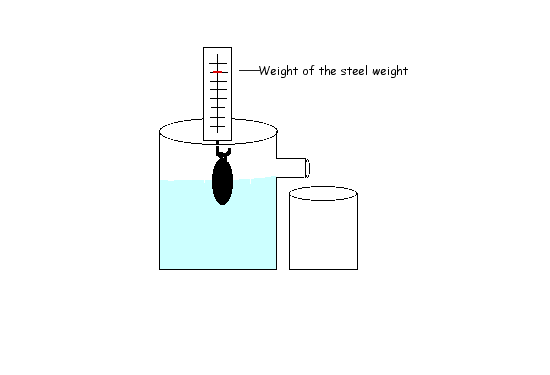Topic outline
-

In this course you will learn about:
- Archimedes' discovery.
- Why some objects float and others sink.
- Buoyant force.
- Archimedes principle.
-
Archimedes was a talented Greek mathematician whose inventions changed the world. Click here to learn more about Archimedes. He is also famous for a scientific law, called the Archimedes principle, which explains why objects float or sink. But, before we get to that, watch the next video to see how the famous saying "Eureka!" came to be.
-
If you place different objects in a bowl of water, for example, coins, pens, erasers and a ball, you will notice that some of the objects float on water, while others sink. Why is that? In the next video we explore the main reasons an object will float, sink or remain at the same depth.
Experimenting with Buoyant force
Watch the next video to see an experiment that explains the upward force (thrust) exerted on objects placed in water.
-
Interactive video: Buoyancy effects
In this interactive video you will explore the laws of flotation. Make sure to answer all of the questions in the video.
-
Activity: Determining densities
Density is an important concept, and has many applications in science and technology.
Density is defined as the amount of mass per volume a substance contains, and it is normally expressed in units of \( g/cm^3\) or \( kg/cm^3\).
Watch the next video for an activity on finding the density of different objects.
-
-
Archimedes principle states that an object completely submerged in a fluid (any liquid) experiences a force pushing upward called the buoyant force, which is equal to the volume of the fluid that the body displaces. This is also called the law of buoyancy. If an object weighs more than its own volume in fluid, it will sink.
This principle is illustrated in the graphic below.
Archimedes' principle allows the buoyancy of any floating object partially or fully immersed in a fluid to be calculated. Understanding buoyancy is important for finding out how objects behave in a fluid (liquid or gas).
Due to the buoyancy force acting on objects in water, the object will weigh less in water. The buoyant force pushes upward against the object while gravity pushes downward.
-
Experimenting with Archimedes principle
What you will need:
- Two eggs (or grapes)
- Two glasses of water
- Salt
- A spoon
What you will do:- Place one of the eggs into one of the glasses of water. What do you notice?
- Put a teaspoon of salt into the other glass of water and stir until it dissolves.
- Place the other egg into the salty water. What do you notice and why?
What did you find?- When you place an egg into a normal glass of water it will sink. This is because the egg has a greater density than the water.
- When you put an egg into salty water it floats. The salt increases the density of the water, which makes the buoyancy stronger and makes the egg feel lighter. The egg floats in salty water because the water now has a greater density than the egg.
-
Calculating Buoyant force
-
-
This is an interactive video that allows you to choose your learning path.